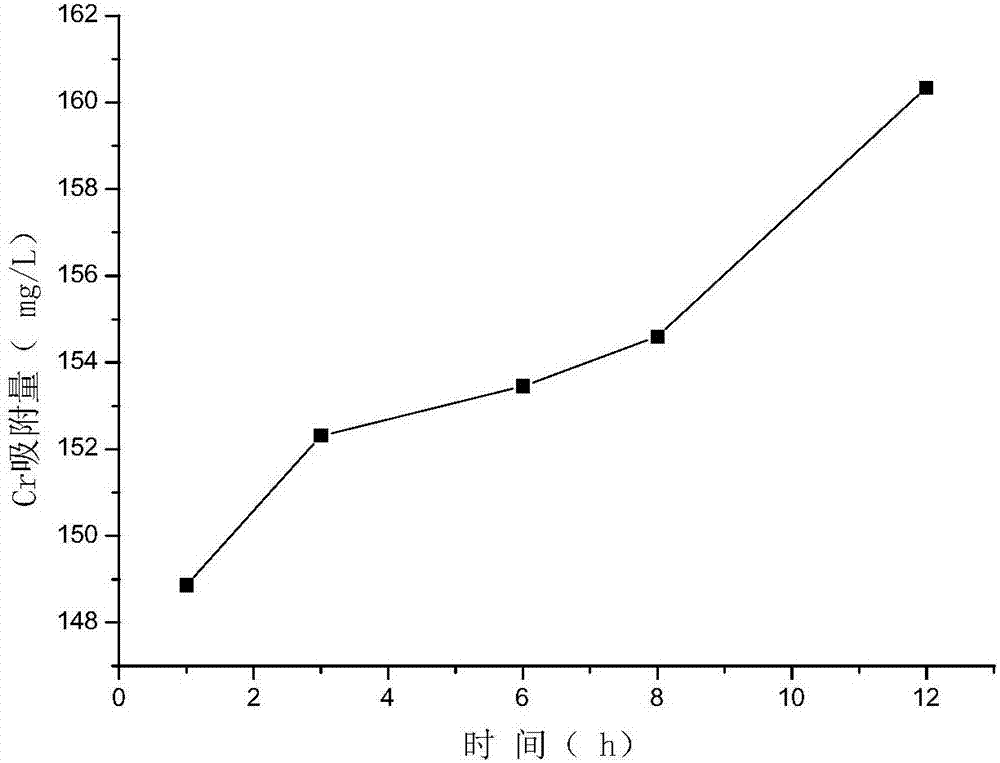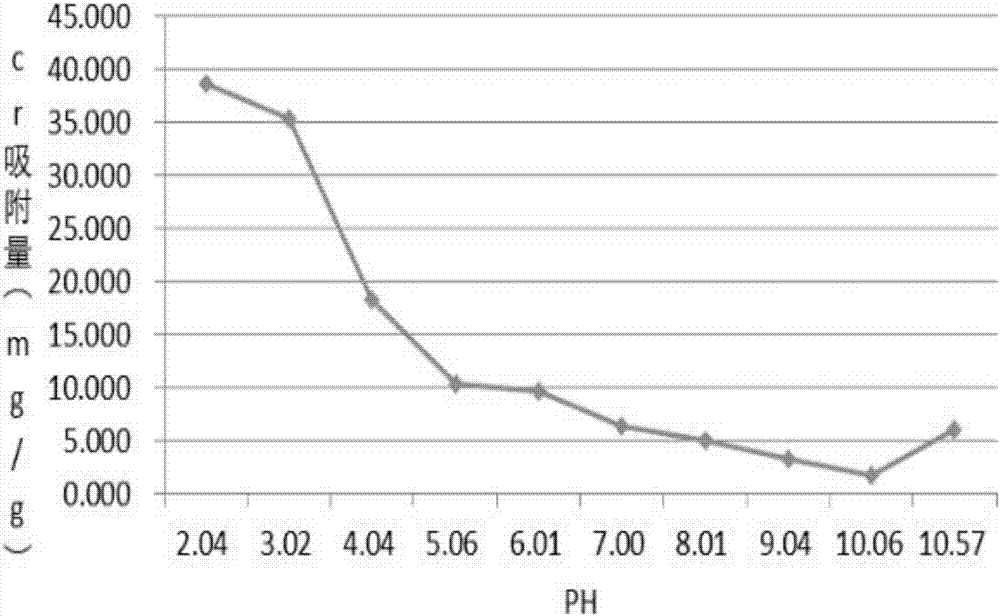Ethylenediamine-grafted magnetic graphene oxide, and preparation method and application thereof
A graft-modified and oxidized stone technology is applied in the field of ethylenediamine graft-modified magnetic graphene oxide and its preparation, and achieves the effects of wide source of raw materials and low price
- Summary
- Abstract
- Description
- Claims
- Application Information
AI Technical Summary
Problems solved by technology
Method used
Image
Examples
Embodiment 1
[0029] An ethylenediamine grafted modified magnetic graphene oxide adsorbent according to the present invention comprises a graphene oxide substrate on which magnetic ferrite nanoparticles are loaded. The ethylenediamine grafted modified magnetic graphene oxide adsorbent is prepared by the following method:
[0030] (1). Preparation of pre-oxidized graphite powder
[0031] Weigh 6g of graphite powder, 5.0g of NaNO3 and 30g of KMnO4, dissolve them in the reaction vessel with an appropriate amount of ultrapure water, and assemble the reaction apparatus. Add 500ml of ultrapure water, set the reaction temperature to 0°C, and the rotation speed to 205 / rpm, react for 4 hours, and add ice once every 20 minutes. After 4 hours the reaction was suspended, the ice was removed and tap water was added for heating the water. Adjust the temperature to 35°C and react for 2h. Add 500ml ultrapure water to the reactant, and react for 1h. After the reaction was completed, 1000ml of ultrapure ...
Embodiment 2
[0040] The ethylenediamine grafted modified magnetic graphene oxide adsorbent prepared by the method of the present invention removes hexavalent chromium in wastewater, comprising the following steps:
[0041] (1). Explore the optimal reaction time: take 50ml of 10mg / L Cr6+ solution in 5 Erlenmeyer flasks, add 1ml of ethylenediamine magnetic graphene oxide, adjust the speed to 200rpm, and the temperature to 25°C (room temperature) , Respectively reacted in the shaker for 1, 3, 6, 8, 12h.
[0042] From the experimental results such as figure 2 As shown, the amount of adsorption does not change much after 3 to 8 hours of reaction. The adsorption capacity increases significantly when the reaction time reaches 12 hours, and the optimum reaction time is 12 hours at present.
[0043] (2). Explore the pH of the optimal reaction environment: Take 50ml of 10mg / L Cr6+ solution in 9 Erlenmeyer flasks and adjust the pH to 2, 3, 4, 5, 6, 7, 8, 9, 10, 11 . Add 1-5ml of ethylenediamine ...
PUM
 Login to View More
Login to View More Abstract
Description
Claims
Application Information
 Login to View More
Login to View More - R&D
- Intellectual Property
- Life Sciences
- Materials
- Tech Scout
- Unparalleled Data Quality
- Higher Quality Content
- 60% Fewer Hallucinations
Browse by: Latest US Patents, China's latest patents, Technical Efficacy Thesaurus, Application Domain, Technology Topic, Popular Technical Reports.
© 2025 PatSnap. All rights reserved.Legal|Privacy policy|Modern Slavery Act Transparency Statement|Sitemap|About US| Contact US: help@patsnap.com



